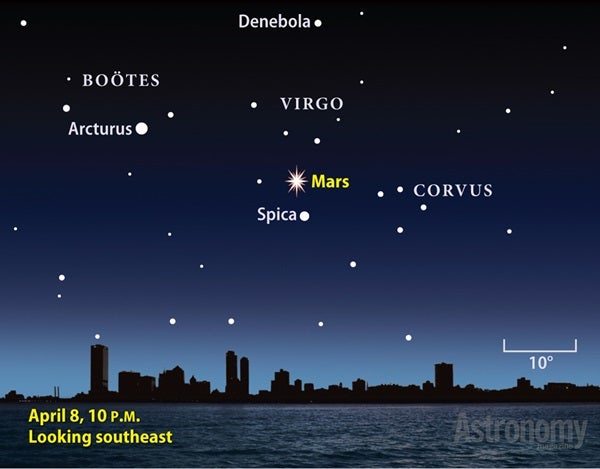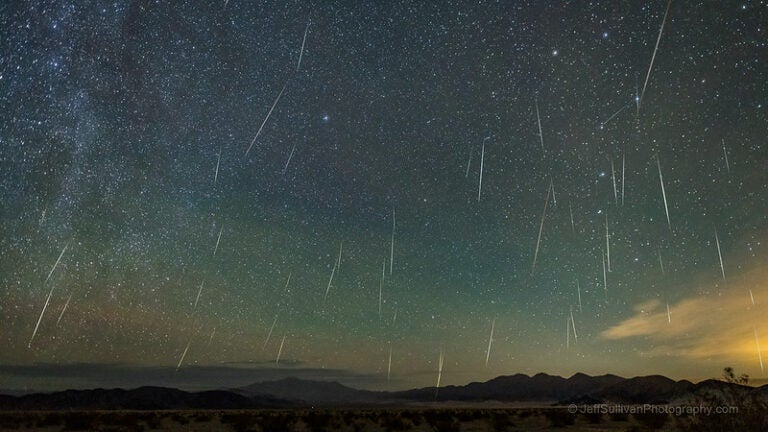The Red Planet has returned to glory. Every two years, Mars puts on a show in the evening sky as it reaches a point in its orbit called opposition, when the planet lies opposite the Sun in our sky, which means it rises near sunset and remains visible all night. In 2014, this event occurs April 8, and it signals the best views of the Red Planet in more than six years.
On that night, look for a brilliant point of light in the southeastern sky just above the bright star Spica in the constellation Virgo. That’s Mars, which shines at magnitude –1.5, brighter than it has since December 2007. The Red Planet even appears slightly brighter than the night sky’s brightest star, Sirius.
Mars is comparatively impressive this year compared to the past few oppositions because the orbits of Earth and Mars aren’t circular. At a distant opposition, the Red Planet can be more than 60 million miles (97 million kilometers) away. On April 14 of this year, though, it lies 57.4 million miles (92.3 million km) distant. As that point, the planet appears 15.2” across through a telescope, and that diameter doesn’t drop below 14.6” throughout the rest of April.
“Check out Mars with naked eyes in the early evening during April, but then transfer to a telescope for better views,” says Senior Editor Richard Talcott. “Because light from the planet passes through less of Earth’s atmosphere when it lies higher in the sky, the best observing should come in the hours around midnight.”
The most obvious Red Planet feature to check out through a telescope is the north polar cap. Because it’s currently early summer for Mars’ northern hemisphere, careful observers should be able to see the cap shrink during April.
Mars won’t appear this big and bright again until its next opposition May 22, 2016, so don’t wait any longer to check out the Red Planet.
Fast facts
- Earth is 9.3 times as massive and nearly twice as wide as Mars.
- From Mars, the Sun appears 44 percent as bright as it does from Earth.
- Mars has two small moons, Phobos and Deimos, both of which Asaph Hall discovered in 1877.
- Mars is the most explored planet besides Earth. There have been 18 successful missions to the Red Planet, including five that are still ongoing, and two more are currently en route.
- Video: Easy-to-find objects in the spring 2014 sky, with Richard Talcott, senior editor
- Video: Tour the solar system: Mars, with Liz Kruesi, associate editor
- StarDome: Locate Mars in your night sky with our interactive star chart.
- The Sky this Week: Get your Mars observing info from a daily digest of celestial events coming soon to a sky near you.
- Sign up for our free weekly e-mail newsletter.











